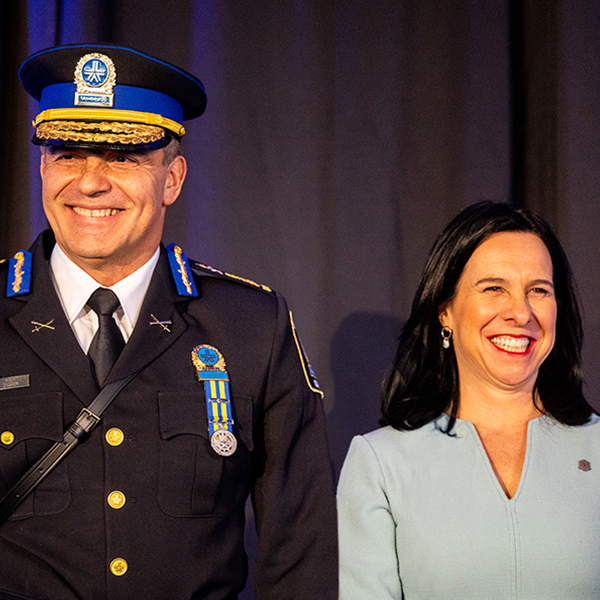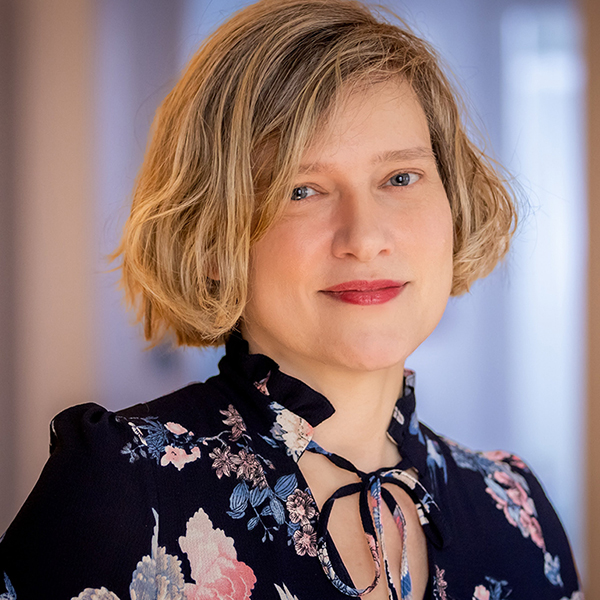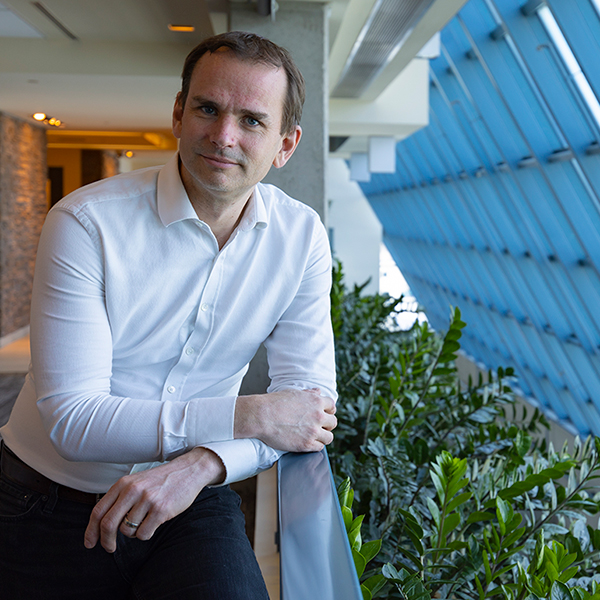Above her desk in Vancouver, Martha Piper, PhD’79, DSc’98, hung a quote from acclaimed modernist painter Georgia O’Keeffe that has long inspired her: “It takes more than talent. It takes a kind of nerve, and a lot of hard, hard work.”
O’Keeffe’s words ring true to Piper, the first woman president of the University of British Columbia, where she served from 1997 to 2006.
In the recently published book Nerve: Lessons on Leadership from Two Women Who Went First, Piper and co-author Indira Samarasekera – the first woman to become the president of the University of Alberta – provide a step-by-step roadmap for other women to follow, challenging them to push through fear and self-doubt.
“I love O’Keeffe’s quote because it says that we can do it if we just have the determination to do things a little differently, aren’t fearful of criticism, and respect the things we care about,” says Piper.
Piper had recently completed a master’s degree in child development at the University of Connecticut when her husband William joined McGill’s Department of Psychology in 1970. The family moved to Montreal, and Piper began doctoral studies at McGill in epidemiology and biostatistics.
Upon graduation in 1979, she planned to become an epidemiologist, but the universe had other ideas: She was tapped to become director of McGill’s School of Physical and Occupational Therapy.
“I never wanted to be a head of a school of physical and occupational therapy, but I think serendipity is more important than we understand,” recalls Piper. She thought about what she could accomplish in the job. “Here’s a position in probably the best faculty of medicine in the country that I could learn from. So, I took the risk. If I had not done that, I would never have been president at UBC.”
Piper has fond memories of her time at McGill, calling it a formative part of her academic career.
“I revered McGill and the people – like Barry Pless, my PhD supervisor, and Dick Cruess, then the dean of medicine who took a risk on me as chair of the selection committee and had a huge impact on my life,” she says. “McGill set the standards of excellence and shaped me as a scholar, and I was lucky to have had these giants in my life.”
Piper left McGill in 1985 to join the University of Alberta as dean of its Faculty of Rehabilitation Medicine. She was appointed UA’s vice president, research and external affairs in 1993.
In 1997, she became the president of UBC. During her tenure there, Piper helped establish the Kelowna campus, UBC Okanagan. She helped create UBC’s Downtown Eastside Learning Exchange, which offers disadvantaged people access to higher education, and played an important role in the creation of both the Canadian Foundation for Innovation and the Canada Research Chairs program.
Piper believes women need mentors and sponsors to achieve leadership positions — but women don’t automatically identify and help support other women to move up the ladder the way men do.
“When I look back on my career, I had sponsors almost every step of the way,” she says, crediting former U of A president Paul Davenport for championing her.
In the book, Piper shares a story about an encounter one winter night in Edmonton with an ‘unexpected mentor’, former deputy prime minister Don Mazankowski. While he walked her to her car, she confided she was considering applying to become president of UBC.
“I respected him and valued his opinion, and what he told me was a serendipitous intervention,” recalls Piper. “He said, ‘Once, maybe twice in your life, if you’re lucky, you’ll have an opportunity that will never come again. If you want to be president of UBC, it won’t come again. You’ll be too old or they won’t be interested in you.’ If that intervention had not happened, I would not have applied.”
In Nerve, the authors explore why women today are still ambivalent about leading. Piper believes it stems from wanting to be liked and keeping people happy.
“We’re afraid of doing anything that risks that. We underestimate our own ability – I saw it all the time when I was president,” says Piper. “When I would try to recruit women to be a dean, or to be a head of a department, they’d tell me all the reasons why they couldn’t do it. Men always said, ‘Sure, tell me where to sign.’ I think we’re constantly questioning ourselves, and we’re afraid of risk and of failure.”
Piper recalls being under intense scrutiny during her tenure as UBC’s president.
“Research shows if you stumble as a woman – and I stumbled many times – people are less likely to give you a second chance compared to men,” she says, adding that this leads to other women being reluctant to step up.
In the book, Piper and Samarasekera implore women to accept that failure is part of success and sharpen their focus.
The co-authors close Nerve by addressing what it’s like after stepping down from a leadership role, including feelings of loss, the fear of being forgotten and how to deal with no longer being in charge.
“I don’t miss the responsibility, and I don’t miss the thrill or the adrenaline; my life is very full,” Piper says.
“I do miss the interactions with interesting people, and being exposed to good ideas. I have to work at trying to be as intellectually engaged and stimulated.”


